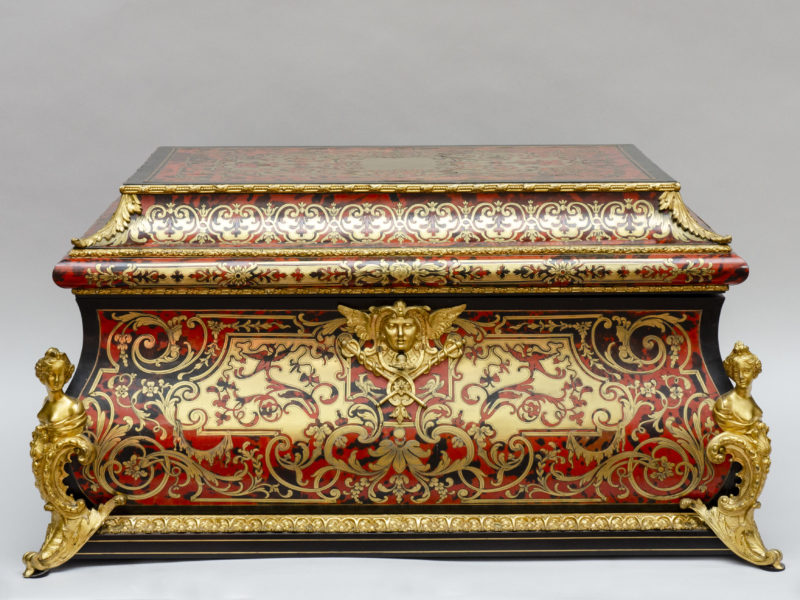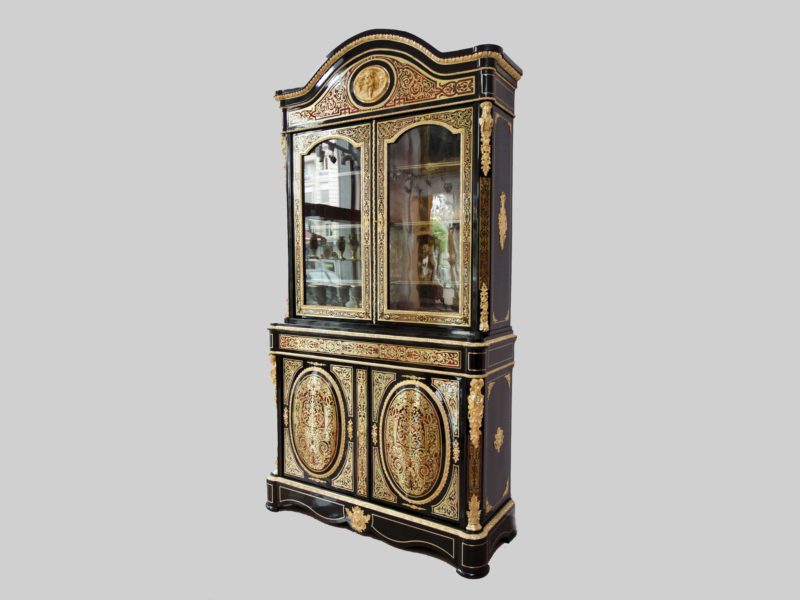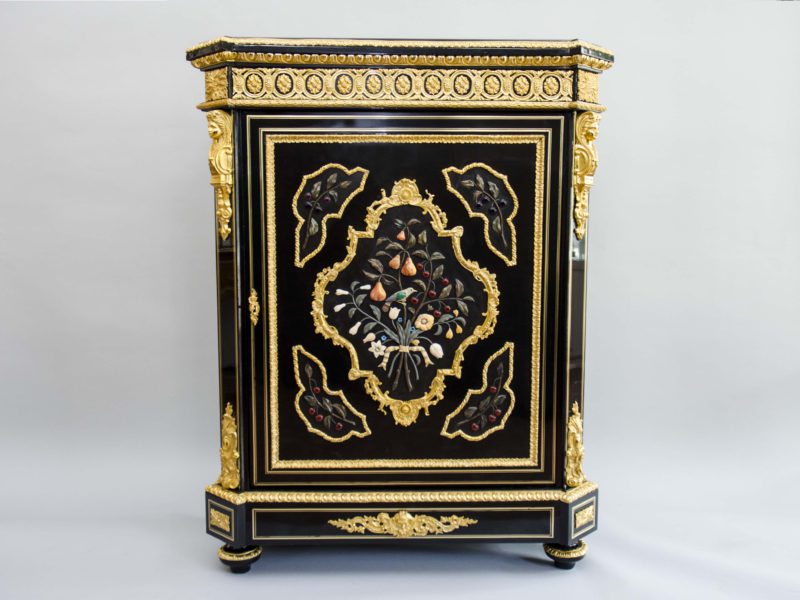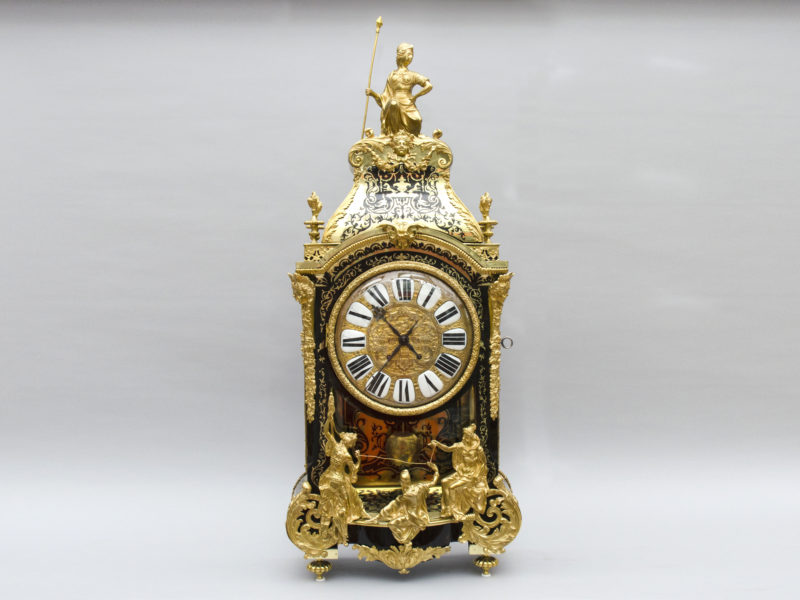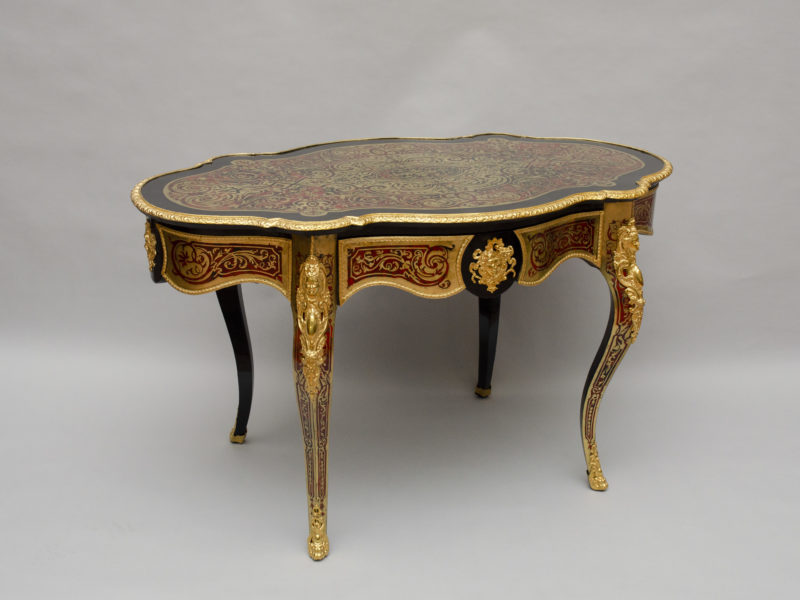Case in Boulle marquetry, 19th century, L’Egide Antiques® collection.
The origins in Europe
Where and when did metal marquetry originate? In Europe, this dating has been the subject of controversy and confusion. The first metal used in thin sheets to decorate furniture was probably silver. The idea of using pewter on surfaces seems to have originated in Paris in the last quarter of the 17th century. The technique was then developed by the cabinetmaker Jacques Talon (patented by Louis XIV in 1663), but he died soon after his first deliveries to the crown.
It was also in Paris that the use of tortoiseshell was born and flourished, closely followed by the Italians, Dutch and sometimes the Germans.
Against this backdrop, it was the genius of André-Charles Boulle (1642-1732), the king’s cabinetmaker at the Louvres since 1672, who brought these 2 techniques together! Boulle marquetry involves inlaying brass and tortoiseshell into panels of ebony. This technique required meticulous precision, as the motifs had to be cut and fitted with extreme accuracy. The result was a work of art that seemed almost magical, with its play of light and shimmering reflections.
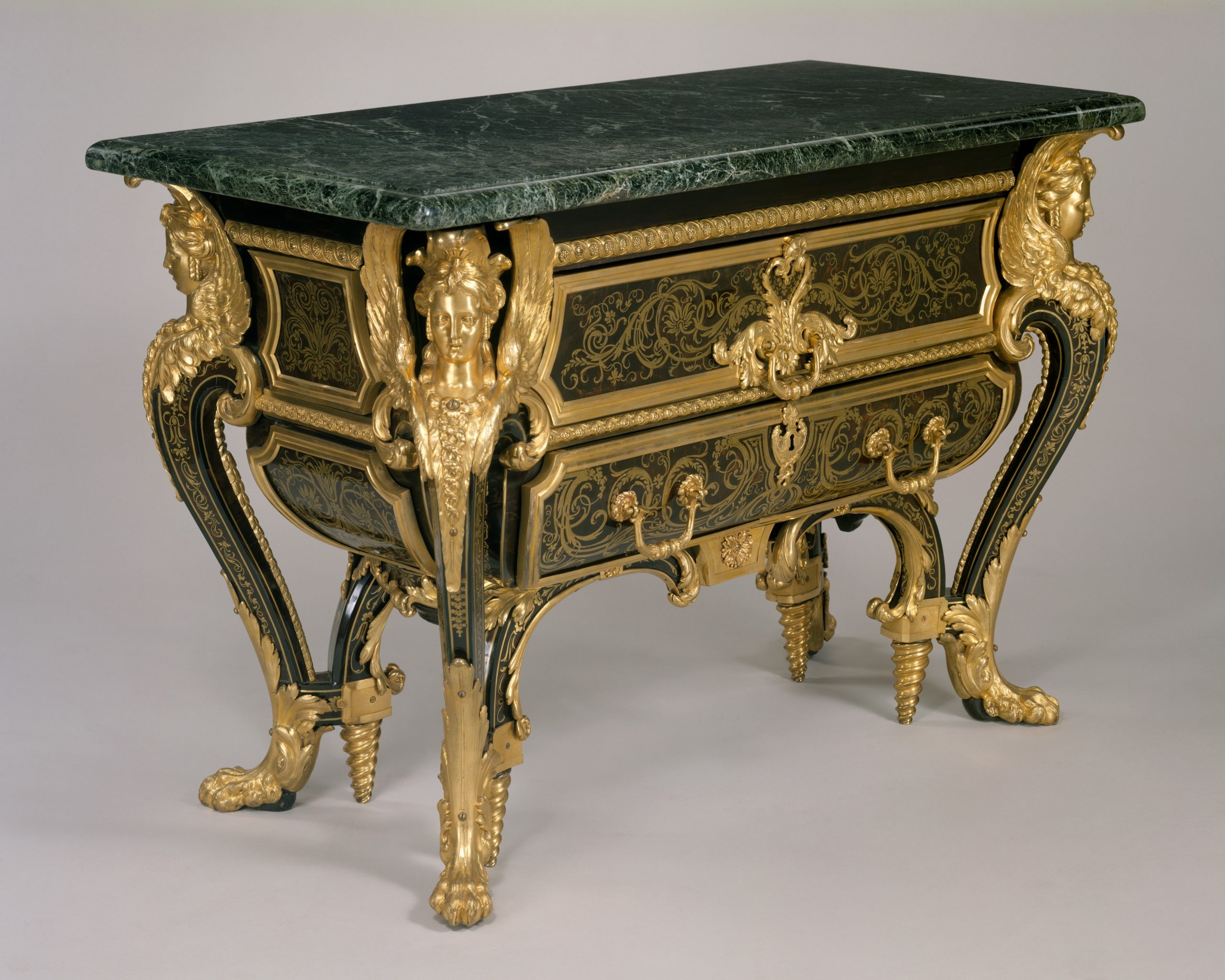
Chest of drawers by André-Charles Boulle, circa 1710-20, Metropolitan Museum of Art, New York, USA.
So, André-Charles was not the inventor of the technique BUT, the perfecting of tortoiseshell and metal marquetry was so closely interwoven with his personal work that his name will live on forever. Boulle marquetry” was born!
Boulle helped to decorate French palaces and castles, including the Louvre and Versailles, with fantastic furniture in the Baroque style. His mastery of ebony and tortoiseshell marquetry was extraordinary, and his furniture and objects were renowned for their elegance and sophistication, often incorporating complex motifs inspired by classical antiquity.
In the 19th century
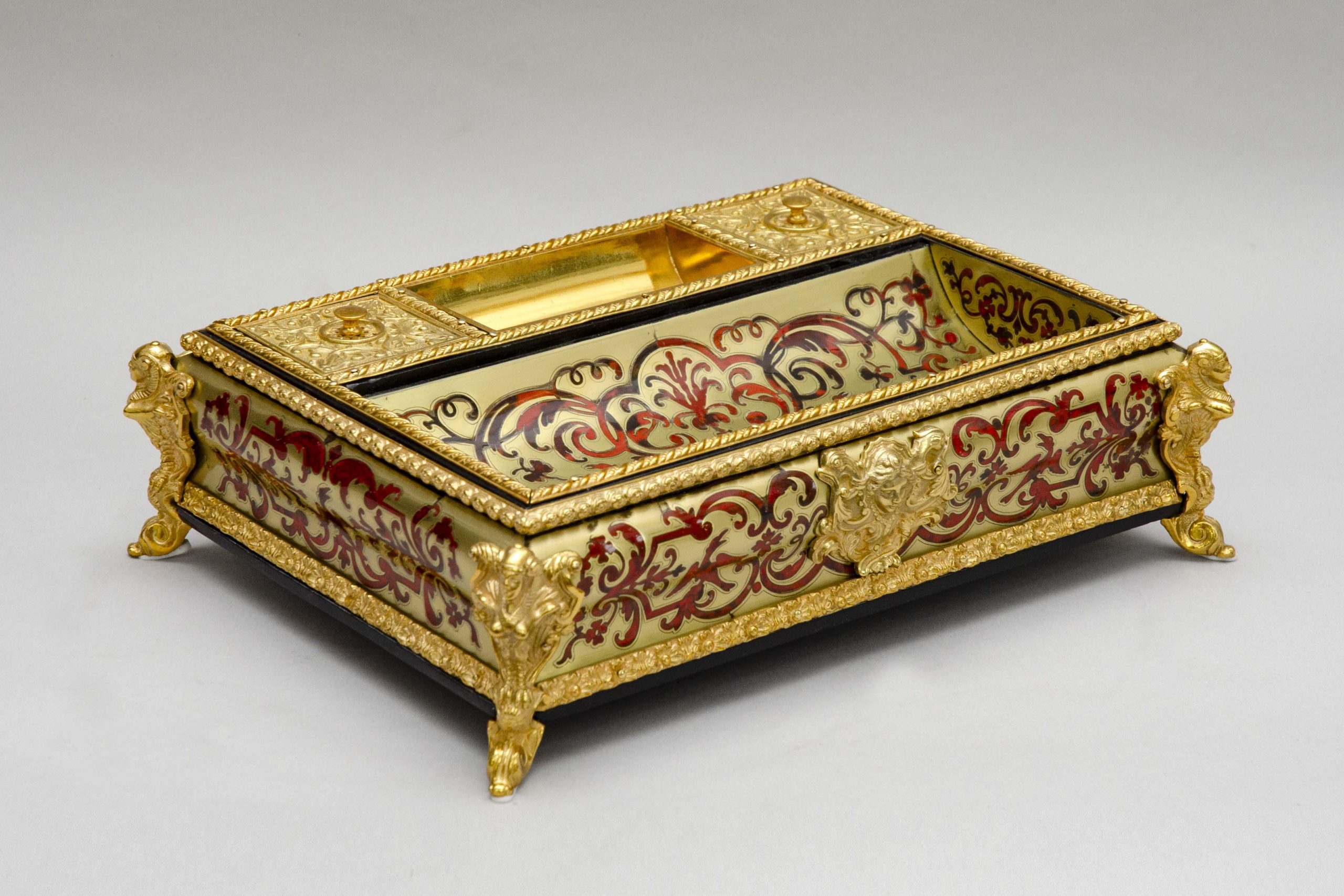
Inkwell, penholder in Boulle marquetry, 19th century, L’Egide Antiques® collection.
Boulle’s influence on the world of craftsmanship and cabinetmaking has endured over the centuries. His marquetry technique was widely imitated and admired, and influenced many cabinetmakers and furniture artists over the following centuries. Boulle’s creations became prized collectors’ items, and many institutions and private collectors sought to preserve and restore his work.
In the 19th century, many cabinetmakers were influenced by Boulle’s marquetry technique and incorporated elements of the Boulle style into their designs. Here are some of the 19th-century cabinetmakers who used the Boulle technique or were inspired by his work:
1. François-Honoré-Georges Jacob-Desmalter (1770-1841): Jacob-Desmalter was a renowned Parisian cabinetmaker of the early 19th century. He worked on the restoration of furniture at the Château de Malmaison, and some of his creations incorporated elements of the Boulle style, including ebony and brass inlay.
2. Gervais-Maximilien-Eugène Durand (1800-1854): Durand was a 19th-century French cabinetmaker who produced furniture in the Renaissance Revival and Gothic Revival styles. His work sometimes featured ebony and brass inlays, reminiscent of Boulle’s marquetry technique.
3. Henry Dasson (1825-1896): Dasson was a Parisian cabinetmaker renowned for his work in the 19th century. He created furniture in the style of the French Second Empire, and some of his pieces incorporated Boulle marquetry motifs, particularly brass and ebony inlays.
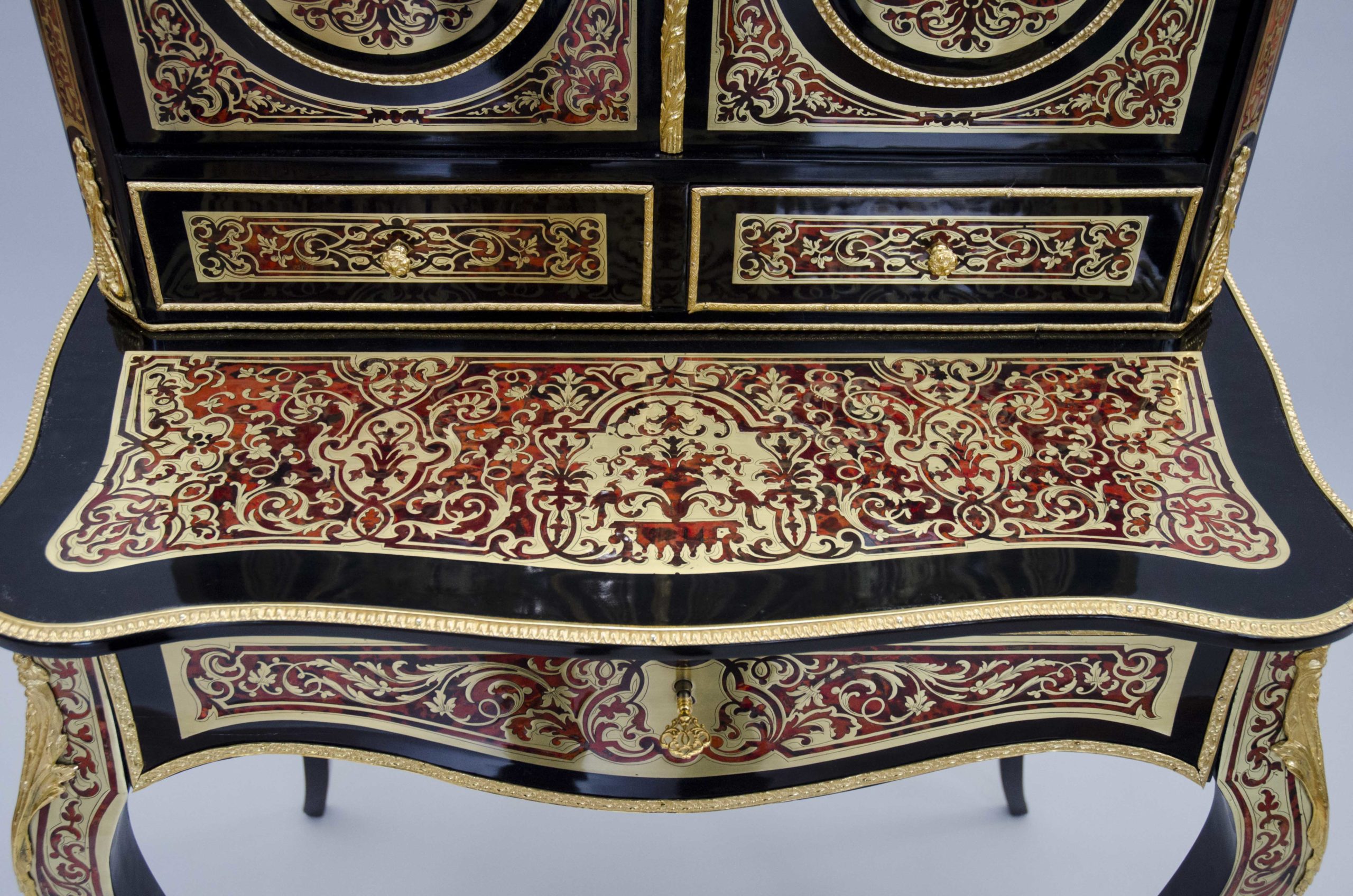
Bonheur du jour in Boulle marquetry, 19th century, L’Egide Antiques® collection.
4. Joseph Cremer (1811-after 1878): Cremer revived Boulle marquetry and encountered great success! Under the July Monarchy, Louis-Philippe even commissioned copies of furniture by Boulle for the Galerie d’Apollon in the Louvre, and the fashion continued under the Second Empire, thanks to cabinetmakers like Cremer and Brandely.
5. Mathieu Béfort (1813-1880), known as Béfort Jeune: he was the second son of the famous Parisian cabinetmaker Jean-Baptiste Béfort. From 1844 to 1880, he worked in the rue Neuve Saint-Gilles in Paris. Like his older brother, Bernard, he was a cabinetmaker and maker specializing in Boulle and rosewood furniture with mosaics and bronzes.
These 19th-century cabinetmakers continued to incorporate Boulle-style elements into their creations, demonstrating the enduring influence of the Boulle marquetry technique throughout the following century.
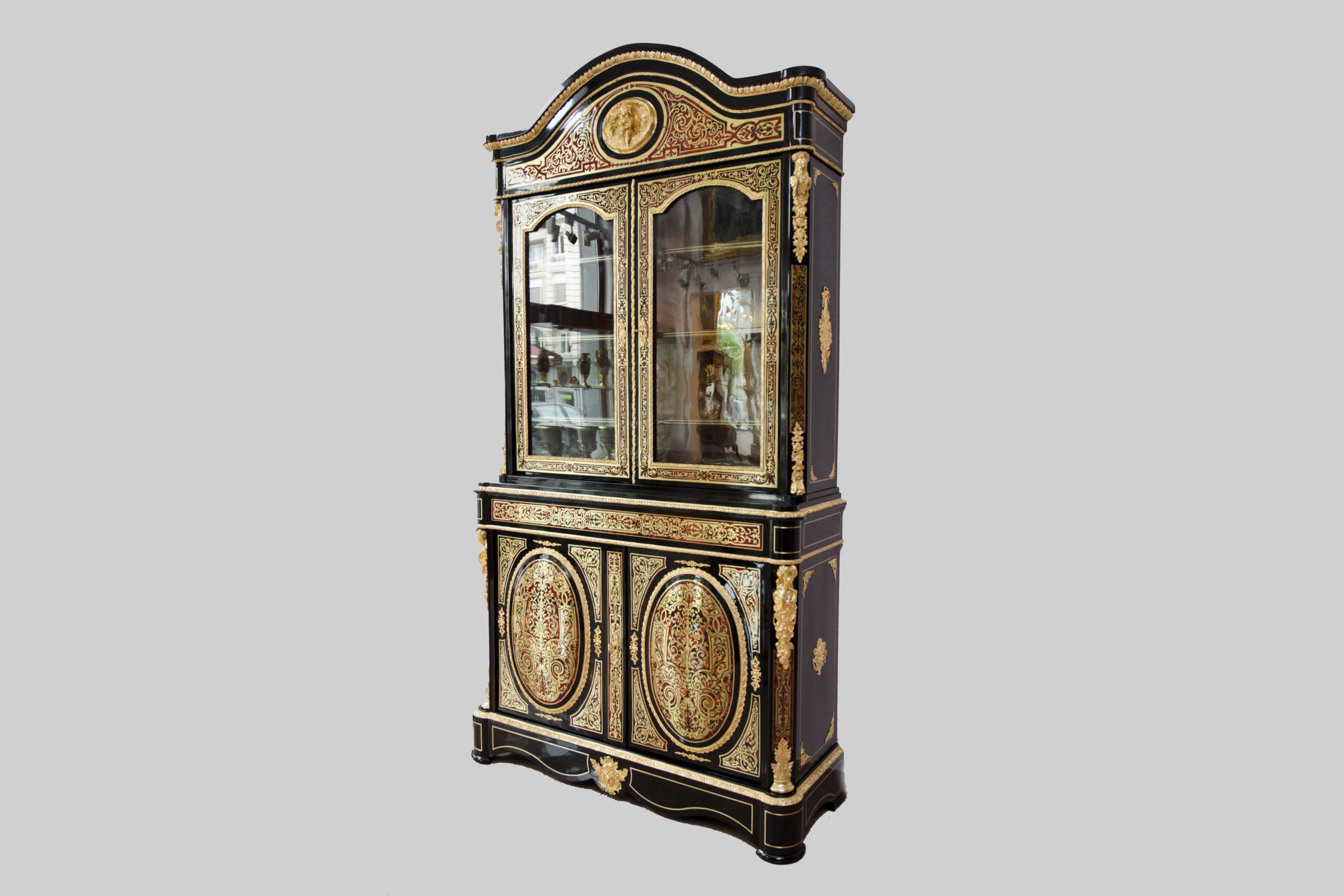
Double corps by Antoine Delafontaine, 19th century, Paris, L’Egide Antiques® collection.
Current creations
It is important to note that the use of tortoiseshell in Boulle marquetry is today subject to ethical questions due to the protection of species. Modern cabinetmakers are looking for sustainable alternatives to tortoiseshell to perpetuate the art of Boulle marquetry while preserving biodiversity.
In conclusion, the marquetry of André-Charles Boulle is a 17th-century treasure trove that continues to fascinate lovers of arts and crafts. His exquisite creations and innovative technique have left a lasting mark on the world of cabinetmaking, and his name remains synonymous with the heyday of European marquetry.
Aurélie Di Egidio
L’Egide Antiques in Brussels, 29 September 2023
Sources:
– “André Charles Boulle (1642-1732), Un nouveau style pour l’Europe”, Jean Nérée Ronfort, Somogy éditions d’arts, Paris, 2009.
– Marqueteries virtuoses au 19e siècle, brevets d’inventions”, Marc Maison and Emmanuelle Arnauld, Editions Faton, Dijon, 2012.
– Reconnaitre la marqueterie Boulle”, Frédéric Massie, René Maubert, Editions Adam Biro, Paris, 1990.
– Le mobilier français du 18e siècle, dictionnaire des ébénistes et des menuisiers”, Pierre Kjellberg, éditions de l’amateur, Paris, 1989.
– Le mobilier français du 19e siècle, dictionnaire des ébénistes et des menuisiers”, Denise Ledoux-Lebard, éditions de l’amateur, Paris, 1984.
– Photo credit: Aurélie Di Egidio for L’Egide Antiques©.
– Photo credit, chest of drawers by André Charles Boulle: https://commons.wikimedia.org/wiki/File:Commode_MET_DT8914.jpg
